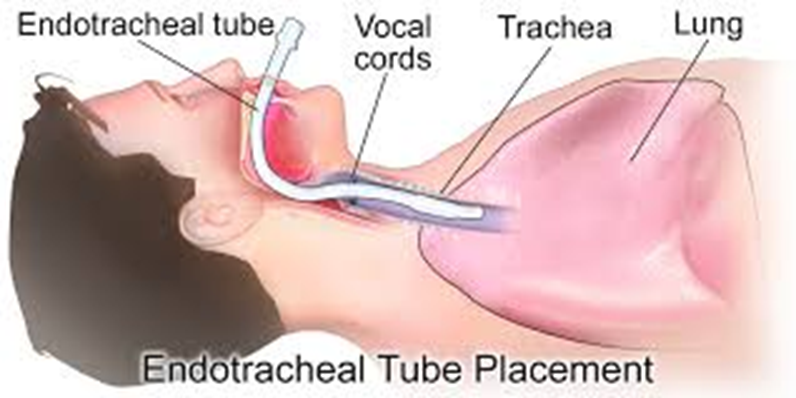A nurse is caring for an oldest patient.
For each potential provider’s prescription, click to specify if the potential prescription is anticipated or contraindicated for the client.
Ice packs to affected area 15 minutes on, 15 minutes off
Intravenous fluids (IVF) at maintenance rate
Ketorolac IV for pain
Ambulate in hallway with supervision
Meperidine IV for pain
The Correct Answer is {"A":{"answers":"B"},"B":{"answers":"A"},"C":{"answers":"A"},"D":{"answers":"B"},"E":{"answers":"B"}}
Choice A: Ice packs to affected area 15 minutes on, 15 minutes off
Reason: Ice packs are generally contraindicated for patients with sickle cell disease (SCD). The use of ice packs can cause vasoconstriction, which narrows blood vessels and reduces blood flow. This can exacerbate the pain and potentially trigger a vaso-occlusive crisis (VOC) by further restricting blood flow to the already compromised areas. Studies have shown that cold exposure can worsen pain in SCD patients, making ice packs an unsuitable option.
Choice B: Intravenous fluids (IVF) at maintenance rate
Reason: Intravenous fluids are anticipated for patients with SCD, especially during a pain crisis. Hydration is crucial as it helps to reduce the viscosity of the blood, thereby improving blood flow and reducing the likelihood of sickling. Adequate hydration can help to alleviate pain and prevent further complications. The administration of IV fluids is a standard practice in managing acute pain episodes in SCD patients.
Choice C: Ketorolac IV for pain
Reason: Ketorolac, a nonsteroidal anti-inflammatory drug (NSAID), is anticipated for managing pain in SCD patients. It provides effective pain relief without the risks associated with opioids, such as respiratory depression and dependence. Ketorolac works by inhibiting the production of prostaglandins, which are involved in the inflammatory process and pain signaling. It is particularly useful for acute pain management in SCD patients.
Choice D: Ambulate in hallway with supervision
Reason: Ambulation during a pain crisis is generally contraindicated for SCD patients. Movement can increase pain and stress on the affected areas, potentially worsening the condition. During a VOC, patients are often advised to rest and avoid activities that could exacerbate the pain. While physical activity is important for overall health, it should be carefully managed and avoided during acute pain episodes.
Choice E: Meperidine IV for pain
Reason: Meperidine is contraindicated for pain management in SCD patients due to its potential for serious side effects. Meperidine can accumulate in the body and produce a toxic metabolite called normeperidine, which can cause seizures and other adverse effects. Additionally, meperidine is less effective than other opioids and has a higher risk of causing dependency and other complications. Therefore, it is not recommended for managing pain in SCD patients.
Nursing Test Bank
Naxlex Comprehensive Predictor Exams
Related Questions
Correct Answer is B
Explanation
Choice A reason:
Restricting the client’s oral fluid intake is not appropriate in this situation. Adequate fluid intake is essential to help flush out the bladder and prevent clot formation. Clients are usually encouraged to drink plenty of fluids to ensure proper hydration and urine flow.
Choice B reason:
Reminding the client that he might feel a constant urge to void is important. After a transurethral resection of the prostate (TURP), the presence of the catheter and continuous bladder irrigation can cause a sensation of needing to urinate. This is a common experience and reassuring the client helps manage their expectations and reduce anxiety.
Choice C reason:
Weighing the client every evening is not a standard intervention specifically related to TURP and continuous bladder irrigation. While monitoring weight can be important for overall health, it is not directly related to the immediate postoperative care of a TURP patient.
Choice D reason:
Monitoring the client’s urine output every 6 hours is important, but it should be done more frequently in the immediate postoperative period. Continuous bladder irrigation requires close monitoring to ensure that the irrigation fluid is flowing properly and that there are no blockages or complications.
Correct Answer is B
Explanation
Choice A reason:
Turn the client every 4 hours: Regularly turning the client can help prevent pressure ulcers and improve overall circulation, but it is not the most effective measure specifically for preventing ventilator-associated pneumonia (VAP). While repositioning can help with lung expansion and secretion clearance, oral care is more directly related to reducing VAP risk.
Choice B reason:
Brush the client’s teeth with a suction toothbrush every 12 hours: Oral care is crucial in preventing VAP. Bacteria from the mouth can easily travel to the lungs, especially in intubated patients. Using a suction toothbrush helps remove dental plaque and secretions, reducing the bacterial load and the risk of infection. This practice is a key component of VAP prevention bundles.

Choice C reason:
Provide humidity by maintaining moisture within the ventilator tubing: While maintaining humidity is important to prevent drying of the respiratory mucosa and to help with secretion clearance, it does not directly reduce the risk of VAP. Proper humidification is necessary for patient comfort and respiratory function but is not a primary VAP prevention strategy.
Choice D reason:
Position the head of the client’s bed in the flat position: Positioning the head of the bed flat can increase the risk of aspiration, which is a significant risk factor for VAP. The head of the bed should be elevated to 30-45 degrees to reduce the risk of aspiration and promote better lung expansion.
Whether you are a student looking to ace your exams or a practicing nurse seeking to enhance your expertise , our nursing education contents will empower you with the confidence and competence to make a difference in the lives of patients and become a respected leader in the healthcare field.
Visit Naxlex, invest in your future and unlock endless possibilities with our unparalleled nursing education contents today
Report Wrong Answer on the Current Question
Do you disagree with the answer? If yes, what is your expected answer? Explain.
Kindly be descriptive with the issue you are facing.
